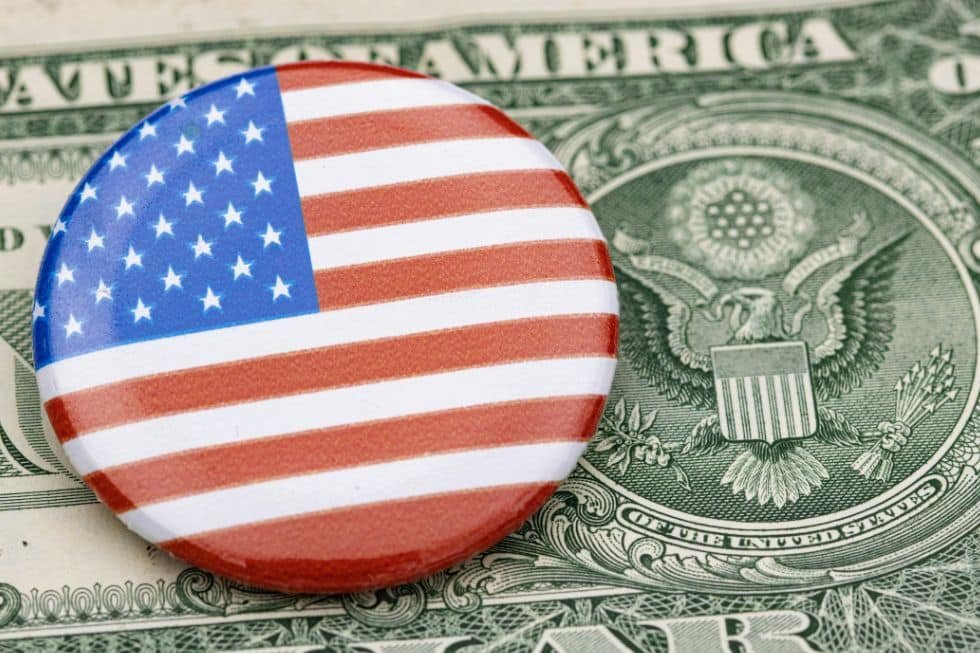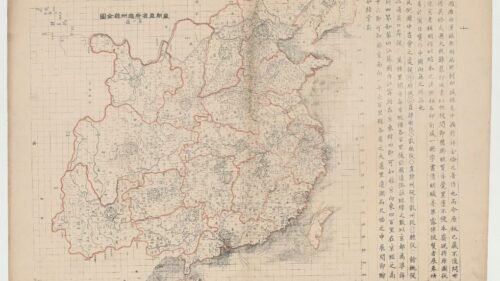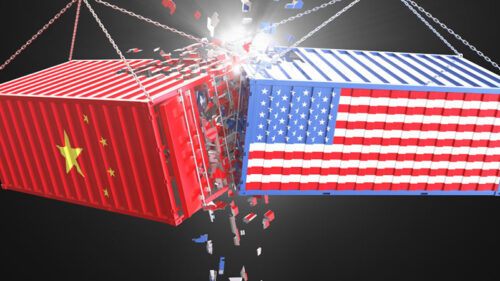US President Donald Trump returned to the White House in January 2025. Since reclaiming office, he has taken a sharper turn toward economic nationalism, rallying his base with a message of strength and sovereignty. His administration, aggressive and unapologetic, consolidates corporate power and bolsters finance capital, signaling a clear shift in priorities.
Guided by the blueprint laid out in Heritage Foundation’s Project 2025, it has scaled back public services, reduced labor protections and reaffirmed the aspiration for US hegemony. In line with this agenda, it has issued executive orders to dismantle environmental regulations, expand fossil fuel leasing and reclassify federal workers under Schedule F — a move that undermines civil service protections and threatens bureaucratic neutrality. Several of these measures are already facing legal challenges from unions and civil rights organizations.
Trump framed his agenda as a fight for “economic sovereignty,” but it largely retools neoliberalism. His administration favors capital over labor, reinforces monopolies through deregulation and tax cuts and promotes trade policies that benefit large firms. These policies deepen inequality and heighten global tensions.
Trade policy
Donald Trump framed his trade agenda as a bold rejection of globalization. In practice, however, it reinforced many of the very global production networks it sought to disrupt. The centerpiece of this approach — a tariff war with China initiated during his first term and intensified in his second — fails to revive American manufacturing. Rather than reshoring jobs, multinational corporations are merely redirecting production partially to other low-wage countries, while a significant fraction remains in China.
Given the contemporary balance of forces in the world, Trump has been compelled to dilute tariffs as well as export controls on technology to China. This manifestation of strategic weakness (Trump Always Chickens Out or TACO) has diminished US heft for third-world countries.
To build public support, the administration argues that tariffs would shield American workers. However, the real outcomes tell a different story: higher prices, pressure on small manufacturers that are dependent on imports and further consolidation of power among large corporations. Even as Trump talks tough on offshoring, US firms continue to move operations overseas and rely on foreign skilled labor, all while enjoying generous domestic subsidies and tax breaks.
Beneath these outward moves lay deeper, long-standing problems. Years of domestic underinvestment (since foreign investment was more profitable) have left the country’s industrial base hollowed out. Without the infrastructure or labor policies to support a manufacturing revival, protectionist policies, no matter how aggressive, can’t effectively overcome these structural weaknesses.
Trade policy under Trump also signals a broader shift in US foreign strategy. In an effort to drive a wedge between China and Russia, his administration is taking a softer line toward Moscow while escalating pressure on Beijing. This recalibration shapes not only trade but also US policy on Ukraine and global technology regulation.
Recent moves to ostensibly reverse this softening towards Russia lack credibility since the US government lacks the capacity to practice dual containment meaningfully. This lack of capacity to ensure decisive outcomes is also manifested in other foreign policy theatres, including Iran and Israel-Palestine.
Corporate tax cuts and the US dollar
Alongside his trade agenda, Trump deepened the 2017 corporate tax cuts, promising they would unleash economic growth. The reality played out differently. Rather than investing in production or job creation, corporations funneled the windfall into stock buybacks, executive pay and profit expansion. Workers saw few of the promised benefits.
While Trump voices concerns about the ballooning federal deficit and the US dollar’s role as the world’s reserve currency, his administration’s fiscal actions are inconsistent. On one hand, tariffs and import restrictions invite retaliation that threatens to weaken key trade relationships.
Moreover, efforts to rein in the deficit curtail the issuance of government debt, a pillar of global dollar demand. Calls to contain the budget deficit reflect expectations on the part of international finance that the US dollar’s role as an international reserve currency is facing significant challenges.
Despite Trump’s warnings, the BRICS bloc in mid-2025 launched a cross-border digital payment system denominated in local currencies, bypassing SWIFT and marking a symbolic blow to dollar hegemony.
Attacks on labor and public services
To offset the cost of corporate tax cuts and narrow the deficit, the Trump administration slashed public spending. The newly created Department of Government Efficiency (DOGE) oversees deep cuts to federal employment and services, reductions that disproportionately impact women, communities of color and rural workers. It is important to note that DOGE has come under Congressional investigation for its opaque contracting practices and large-scale outsourcing of federal services, especially in education and housing.
Labor policy took a sharply anti-union turn. The administration expanded “right-to-work” laws, weakened collective bargaining and supported union-busting efforts. As income shifted from wages to profits, consumer demand faltered, undermining employment and economic stability.
Trump speaks of restoring American industry. Yet his labor agenda directly undercut this goal. With stagnant wages and minimal worker protections, the domestic demand necessary to drive manufacturing growth never materialized.
Export controls and technology policy
Facing weak domestic job creation, Trump turned to export controls and investment restrictions under the banner of national security. His administration is expanding the powers of the Committee on Foreign Investment in the United States (CFIUS) and extending bans on exports of semiconductors and AI technologies to China.
These actions were designed to slow China’s rise in high-tech sectors, and are having mixed results. While US tech firms receive government support in the form of subsidies and contracts, they are also losing access to lucrative Chinese markets. Meanwhile, China continues to make technological strides, and the tech sectors of the two countries are increasingly decoupling.
Ironically, the previously mentioned dilution of export controls on technology is now being presented as a means of decelerating the pace of innovation in China, especially in areas of high technology. This dilution can be seen as a way to avoid missing out on profit opportunities in the Chinese market, which could be permanently lost if the technological gap between the two countries is fully bridged.
Rather than catalyzing broad industrial renewal, Trump’s tech strategy directs public funds into already dominant firms like Amazon, Microsoft and Nvidia, further entrenching their market power.
DeepSeek and the US–China tech competition
While Wall Street initially continued investing in Chinese AI, mounting pressure from secondary sanctions and growing scrutiny of US-China tech flows have slowed capital inflows significantly. DeepSeek, now integrated into a broader Alibaba-Baidu AI ecosystem, continues to shape language artificial intelligence standards globally. Its strong performance and lower costs shook US tech markets, triggering a dip in American tech stock values. In response, the US government banned Chinese AI products from public-sector devices, a move soon echoed by several allies.
These bans offered temporary relief to US firms. However, behind the scenes, Wall Street investors continue to channel capital into Chinese tech companies, despite growing geopolitical tensions, in pursuit of returns. The contradiction is striking: while Washington sought to contain China, its financial sector bets on its success. The result is a glaring lack of strategic alignment.
Trump’s second-term economic agenda did not break with neoliberal orthodoxy; instead, it is deepening it. His blend of protectionism, deregulation, and financial consolidation bolsters corporate power but leaves fundamental weaknesses in the US economy untouched. Infrastructure gaps widen. Real wages stagnate. Labor rights erode.
While Trump promised to restore American strength, the policies he pursues may have accelerated the very decline they aim to prevent.
[Nicolette Cavallaro edited this piece.]
The views expressed in this article are the author’s own and do not necessarily reflect Fair Observer’s editorial policy.
Support Fair Observer
We rely on your support for our independence, diversity and quality.
For more than 10 years, Fair Observer has been free, fair and independent. No billionaire owns us, no advertisers control us. We are a reader-supported nonprofit. Unlike many other publications, we keep our content free for readers regardless of where they live or whether they can afford to pay. We have no paywalls and no ads.
In the post-truth era of fake news, echo chambers and filter bubbles, we publish a plurality of perspectives from around the world. Anyone can publish with us, but everyone goes through a rigorous editorial process. So, you get fact-checked, well-reasoned content instead of noise.
We publish 3,000+ voices from 90+ countries. We also conduct education and training programs
on subjects ranging from digital media and journalism to writing and critical thinking. This
doesn’t come cheap. Servers, editors, trainers and web developers cost
money.
Please consider supporting us on a regular basis as a recurring donor or a
sustaining member.
Will you support FO’s journalism?
We rely on your support for our independence, diversity and quality.








Comment